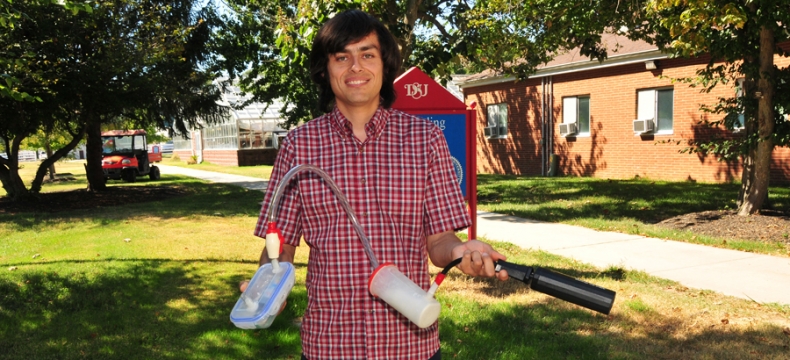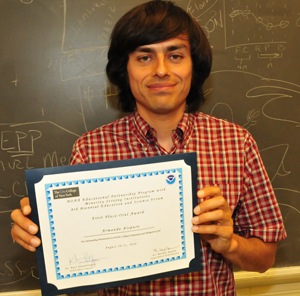
DSU Graduate Student Takes 1st in Oral Competition
Armando Alberto Aispuro, a graduate student in Natural Resources, has won 1st place for his oral presentation at a recent National Oceanic and Atmospheric Administration (NOAA) competition.
|
|
Mr. Aispuro gave his winning presentation at the 8th Biennial Education and Science Forum in New York City sponsored by NOAA’s Educational Partnership Program with Minority Serving Institutions.
The title of Mr. Aispuro research presentation was “The Role of Apalachicola Barrier Island Ecosystems in Supporting Migratory Passerine Concentration Sites.”
Said in a simpler manner, the DSU graduate student’s research involved the study of songbird migration in connection with St. Vincent Island and Cape St. George Island, both located off the panhandle coast of Florida.
Because some songbirds choose a migratory route in which they fly from the Yucatan Peninsula in Mexico across the Gulf of Mexico to St. Vincent – the largest barrier island off of that part of Florida – Mr. Aispuro has studied the role that the island plays in providing a place where the birds can find rest and nourishment after their long flight. He also did a similar study relating the songbirds’ stopover on St. George Island, a smaller barrier island east of St. Vincent.
“It is called “stop-over” ecology, which is a relatively new area of study,” Mr. Aispuro said. He noted that such research sheds light on the ecological function of these resources, provides data useful for the mitigation of impending sea-level rise, and provides data for management, preservation and protection.
To understand how the birds are using barrier island stopover sites, Mr. Aispuro designed and built a "breath chamber" to capture the birds' respiration, which provides information about their diet and habitat choices.
“We show that birds rely on these barrier islands to gain fat and muscle to complete their migration to northern breeding grounds,” Mr. Aispuro said. “We also show that a stopover along the Gulf coast allows birds to shift or maintain a diet in response to available resources in North America.”
Mr. Aispuro, who is from Santa Barbara, California, said after he completes his master’s degree, he hopes to land a job with either a nonprofit or government agency in the area of conservation biology.


 Armando Alberto Aispuro proudly show his 1st place certificate from the NOAA oral competition.
Armando Alberto Aispuro proudly show his 1st place certificate from the NOAA oral competition.